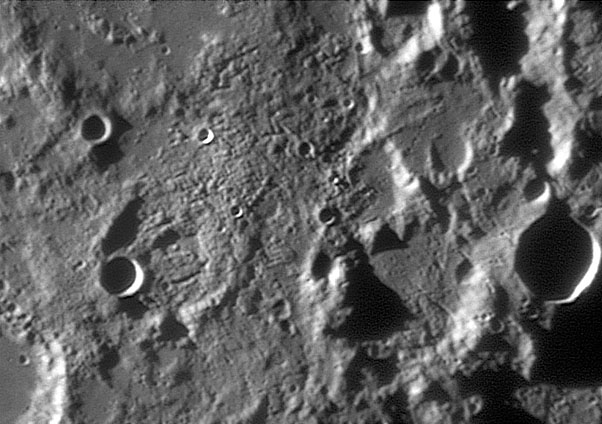September 10, 2004
Viscous Volcanics?
Image Credit: K.C. Pau |
|
Viscous Volcanics? One of the weirdest terrains on the Moon is a mound of lumpiness extending north from the crater Descartes. This terrain consists of a series of hills and ridges separated by valleys and depressions. It looks like a super-large, rough-textured lava flow erupted in Deslandres and flowed over the crater wall to the north. It is unlike mare basalts, which flowed smoothly and made relatively flat surfaces, just as we see in Hawaii for fairly fluid lavas. On Earth, rough or blocky lavas, often with steep sides and great thicknesses are made of viscous lavas that don't flow easily, but instead pile around their vent areas. Such lavas typically are rich in silica and have more complex origins than fluid basaltic lavas. Because of a volcanic origin interpretation similar to this the Apollo 16 site was picked to be near this Descartes rubble or Descartes Formation as it was named by the US Geological Survey. But the rocks the astronauts collected weren't what was expected - the samples were impact breccias, rocks that had suffered repeated involvement in impact cratering. The viscous volcanic interpretation vaporized on the spot as geologist scrambled to explain these weird rocks as impact debris, perhaps from Imbrium a thousand kilometer away. And 32 years later an impact origin is still claimed for the Descartes Formation even though there is little understanding of why these rocks are so unique in their location and morphology. Time to go back to the Moon for some answers! Technical Details: Related Links: Tomorrow's LPOD: A Steep Spot on the Moon
|
Author & Editor: Technical Consultant: Contacte al Traductor: A service of: |
COMMENTS?
Register, and click on the Discussion tab at the top of the page.




